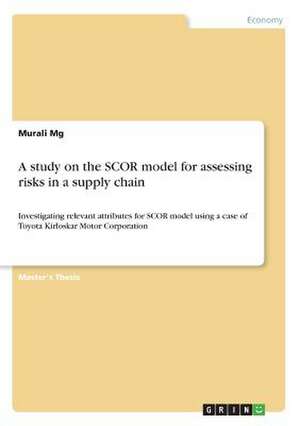A Study on the Scor Model for Assessing Risks in a Supply Chain
Autor Murali Mgen Limba Engleză Paperback
Preț: 285.97 lei
Nou
Puncte Express: 429
Preț estimativ în valută:
54.73€ • 56.93$ • 45.18£
54.73€ • 56.93$ • 45.18£
Carte tipărită la comandă
Livrare economică 08-14 aprilie
Preluare comenzi: 021 569.72.76
Specificații
ISBN-13: 9783668420601
ISBN-10: 3668420602
Pagini: 96
Dimensiuni: 148 x 210 x 6 mm
Greutate: 0.14 kg
ISBN-10: 3668420602
Pagini: 96
Dimensiuni: 148 x 210 x 6 mm
Greutate: 0.14 kg
